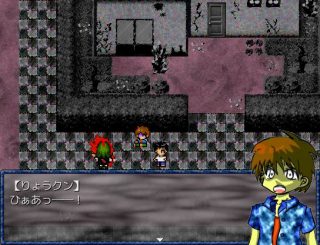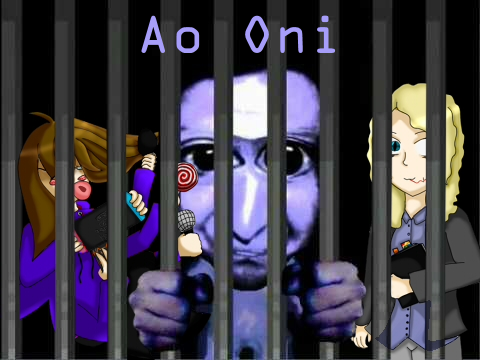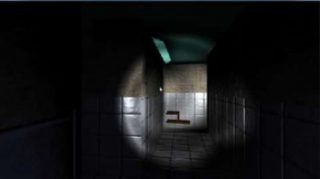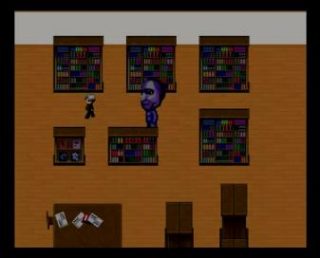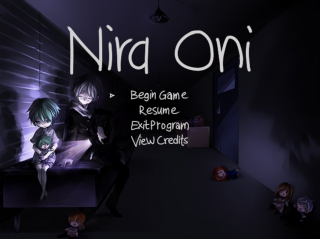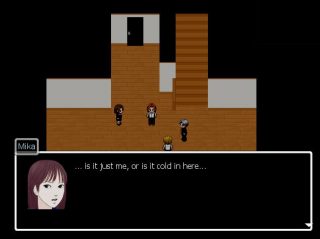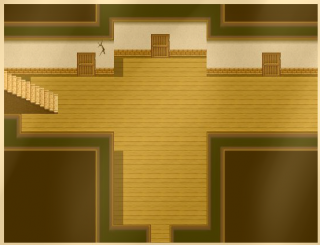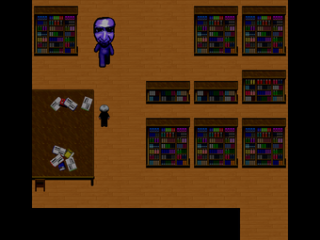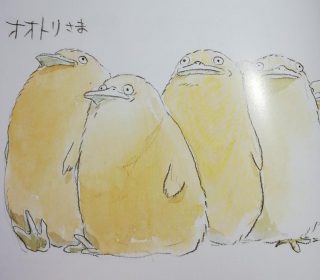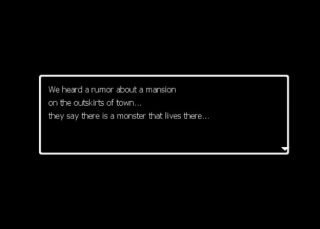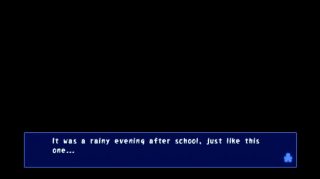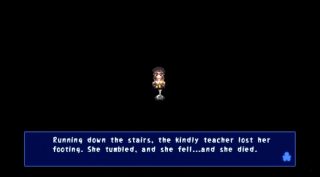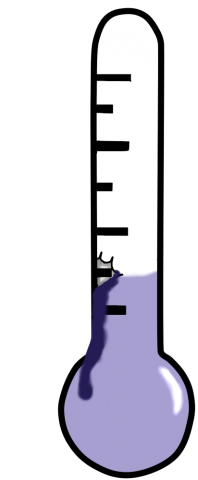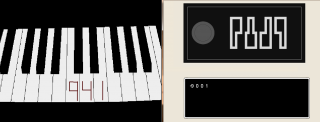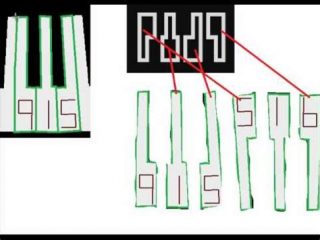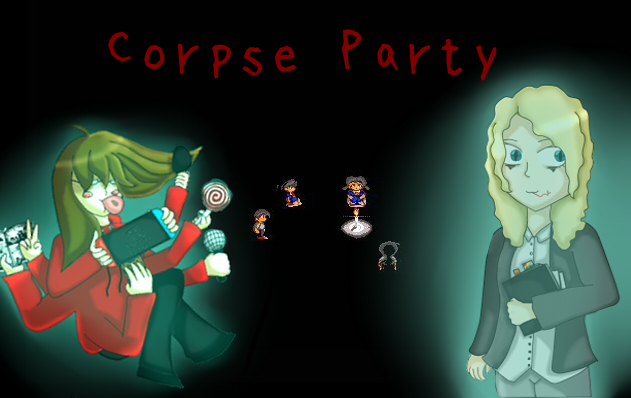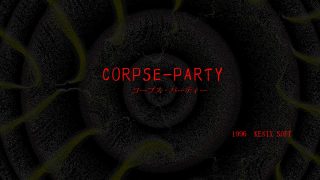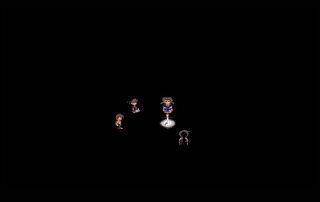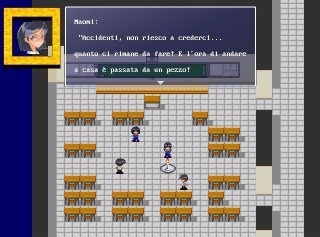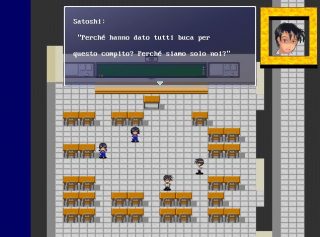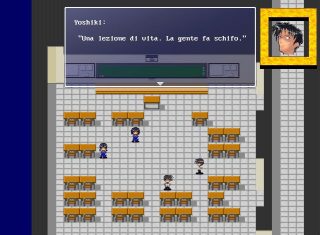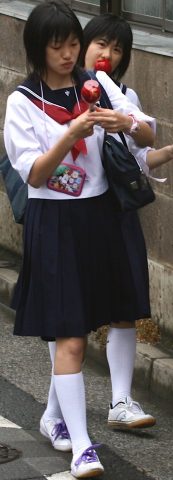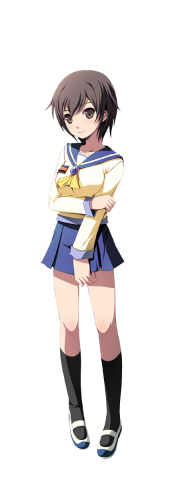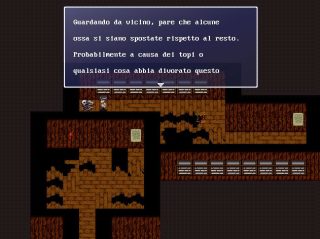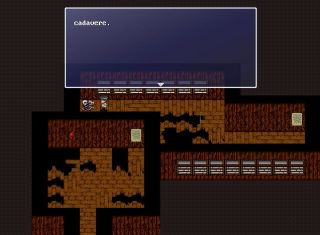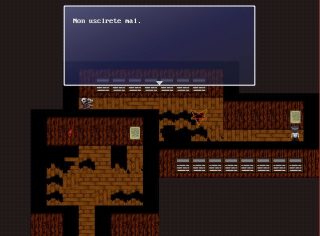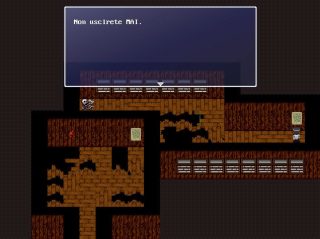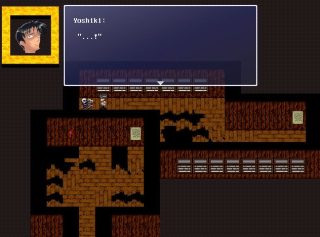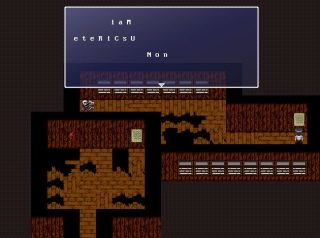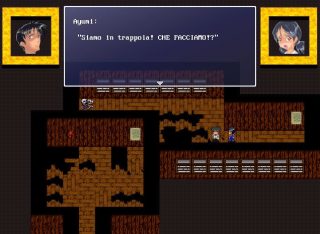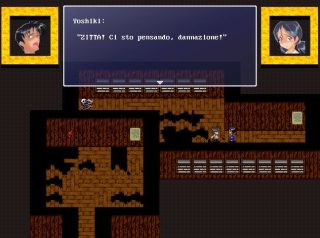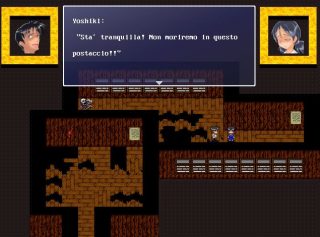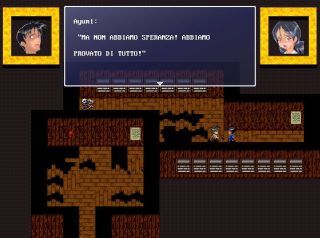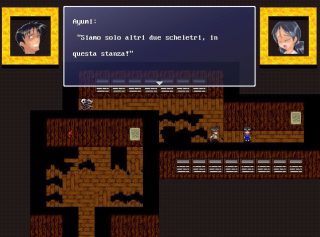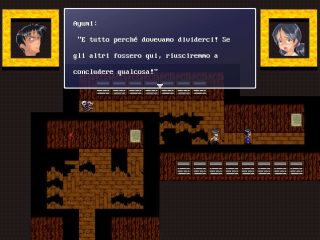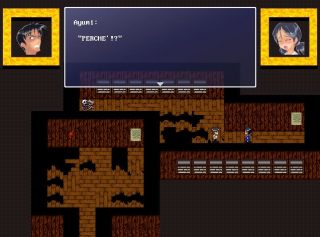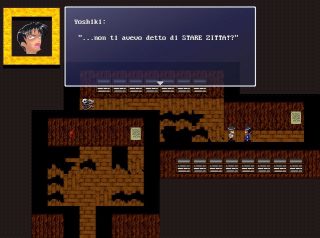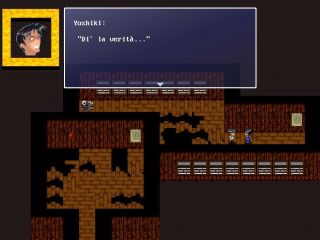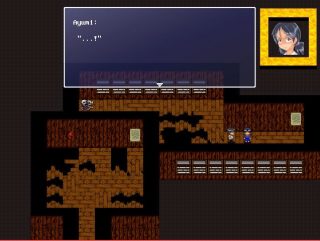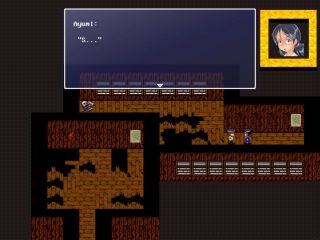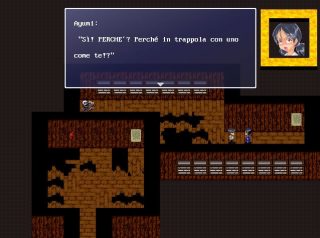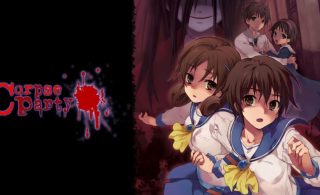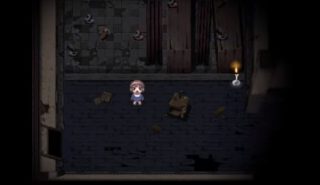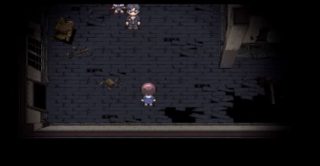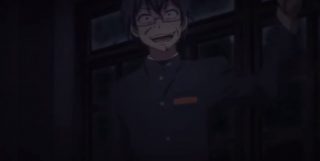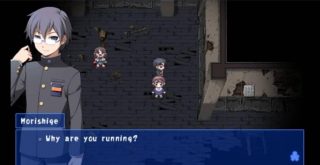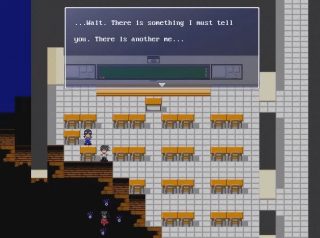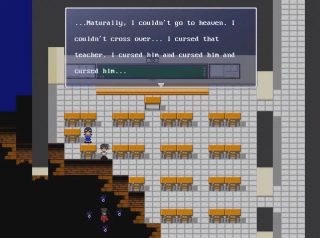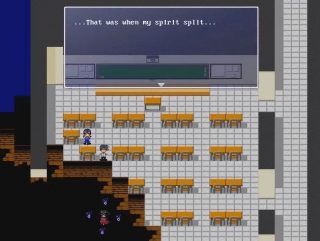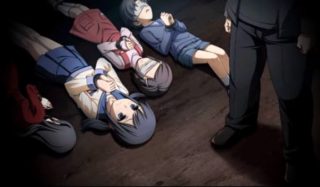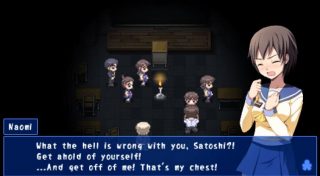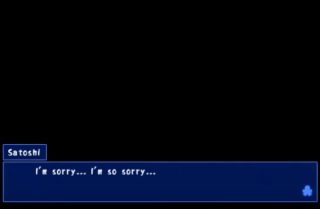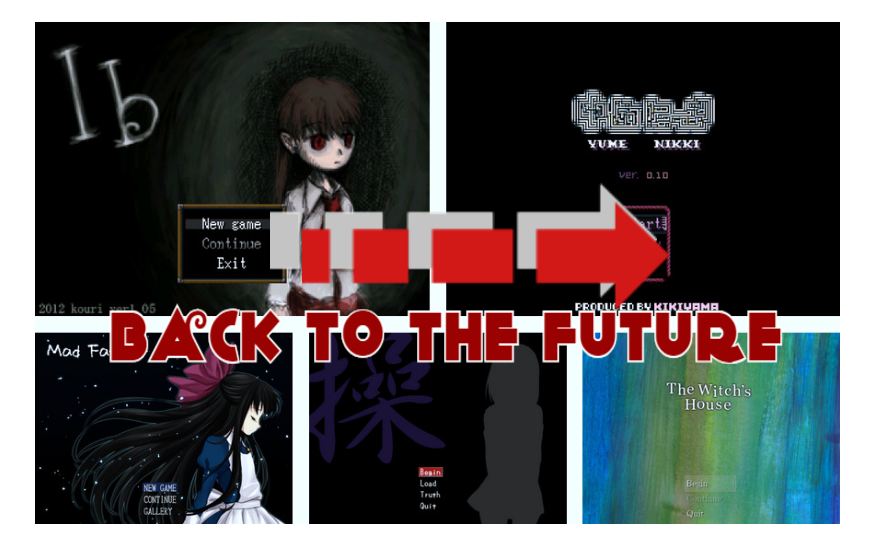You loved it, it brought you closer than any other game to the HOR-RPG current , a game that has had the most imaginative transpositions by fans in the audiovisual field, school musicals, one billion fan arts and more; broke more than 1,150,000 downloads in Japan only: folks, we’re talking about Ib!
You have no idea of how much thinking about this article has scared us in the past few days. Yes. Because in addition to having to manage the academic commitments and the production of TROFA (we are lonely and sad people, therefore we produce everything by ourselves, forgive us), we already knew that a giant was waiting for us here on the Archives, with which we will open this new season of Back to the future…
A very important piece of HOR-RPG history, something that started to scratch a deep wound inside what was the old definition not only of RPG Horror, but of independent indie horror.
We intended to prepare an interview with kouri who, alas, revealed to us that he did not have enough time for such a project. It would have been very interesting to listen to his version of the facts, since as we will see in the Product History , he would have offered an interesting point of view from an independent author, in fact, who found himself struggling with a fast-coming success that they certainly did not expect to have.
Product History
The first release date of this now “masterpiece” of the HOR-RPG field is, compared to others of the genre, rather well known: February 27, 2012. It is unknown to us whether to promote the title Kouri wrote in forums, but it is very likely that the first distribution channels of the game were the author’s website and vector.co.jp, at first glance a portal like others that we have seen here in Back to the Future.
Vector, however, is a truly peculiar distribution channel for an indie game, because the site is not just about video games… But about software in the more general concept (even if it has a special section for games). In fact, if you go to the main page of the site you can find a lot of different products.

A legitimate question may be: “How did people find Ib?” This phenomenon has sparked perplexity in us too.
Realize the situation: even in such a vast portal, the game ranked third in the Vector.jp download record for several years, and won the most consensus (270) in the user voting event “Popular Vote 2012”
It can be said that this title was destined to grow!
Reviews range from four to five stars. Later on here and in the Trump Card paragraph this discussion will be deepened, and above all the reasons for these enthusiastic reviews.
So, for now, let’s see how far the game went from Vector.
It didn’t even have time to switch to other distribution portals, the gameplays on the game were already spreading in Japan.
In addition, the game was so successful that it earned an article on the famous online videogame-news site Famitsu, where Kouri also gave an interview (which we will talk about in the Author-Work Relationship).


(In the photos a part of the article on Ib by Famitsu, and part of the transcript of the interview with Kouri)
And also, as mentioned in the introduction, only in Japan the game gained the most imaginative transpositions from the fans (we believe it is necessary to mention again the case of the school musical based on Ib) and, prick up your ears…
A lot of merchandise (albeit limited to certain periods of time)!
Mini figures sold in “Animated” stores in Japan in early 2014; a calendar for 2013 sold in Comiket 83; Ib, Garry and Mary plushies in late January 2013 at Taito station as arcade awards; a tote bag and a glass sold at the “Guertena Shop”..
The game was therefore increasingly known …
Until it arrived to VgPerson (or Kate, for friends) who came forward to translate Ib into English and bring this small videogame success to us peoples of the West.
Here, after so much popularity in Japan the stage of a great step has approached …
The arrival in the West.
By now, after a full season of Back to the Future, you have learned well what it means to export an HOR-RPG in English … Ib is no exception.
Here too, the game gained good popularity, earning other articles in other online newspapers (some also prominent), as well as obviously a lot of gameplays on Youtube …
But from a wider audience, however, how was the game received (both in the East and in the West)?
Despite being many years later compared to them, the game seems on one hand back from Generation 0, in fact …

The sculptures and paintings in the gallery are truly beautiful. You can enjoy a strange and slightly frightening atmosphere, I recommend this game to those who like these moods. […]
(Review on Vector.com.jp)

(Review on Metacritic.com)
But why we consider Ib a “character drama” then, if it has many elements that can create a good “horror experience”?
We take various excerpts from other reviews regarding the game, including reviews and, this time, comments on Youtube …




“I need to recover… It was a shock, I’m not joking. I’ll be depressed for like a week, like when Akise Aru and Alois Trancy died.”
Here, this last comment is a good reason to start the discussion on a particular ending of Ib, to which the person who wrote refers to: Sacrifice
Over time, when the game gained popularity in the West, two unofficial versions of the game came out: the Green Version and the Hardcore Version.
The Hardcore adds just a few features of the Green Version and precisely increased difficulty with just one petal and no place to heal.
The Green Version is the most particular case (having also been courageous to have been published without Kouri’s consent, and therefore eventually canceled …), because it was characterized by this ending in particular.
This additional ending is based on the choice you have with Mary as to who you would choose if two people could leave the Gallery. In that choice there is the option “I would sacrifice myself”. In this ending Ib actually sacrifices herself, if in this scene (obviously added in this version) the option highlighted on the screen is chosen.

Subsequently Ib tears the petals from her rose, sacrificing herself and making Garry and Mary return to the real world, and as in the final “Forgotten Painting” from the original game…

Here, this slightly tearful ending in the Ib community has made a lot of talk about itself.
But why this?
We saw it in the previous comment: because the characters mainly interact with each other, “the drama is fully concentrated on them” and above all on the nobility of mind of Ib who made her sacrifice in this finale.
In short, there is a more character-centered discourse.
But we will talk more about this phenomenon in the following paragraph …
And in fact here I am! Ele has left me place to talk, and here I am, Pao, ready to rack my brains with you!
So, as usual, before we get to the topic, let’s start with a preamble.

Maybe someone will remember this phenomenon …
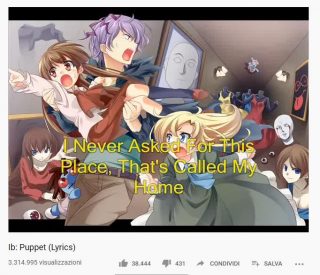
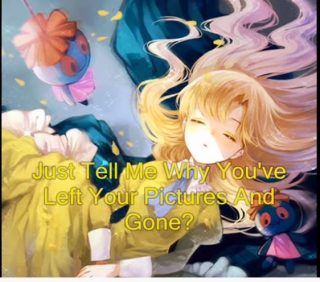
Which then went on in the same period like this…
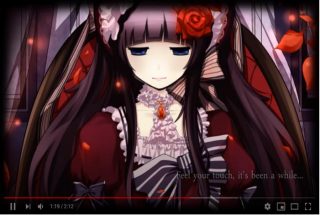
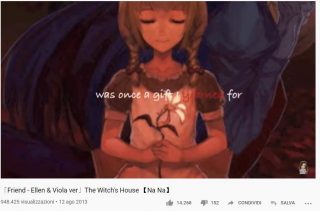
From theories on characterizations, dedicated pages, lyrics of musical pieces that apparently seem to accompany only an effective staging (about the relationship and difference that there can be between a good direction and good characters: it was a theme that we have already covered in Corpse Party), they become the main topic of discussion by fans of these products: the characters.
These youngsters begin to emerge from their contexts of origin, absorbing almost all the attention of the players and spectators who come across their stories.
In fact: they begin to replace the player, there starts to be one of them, the questions asked begin to be “what would X have done instead of Y?”
For this field of games it was an unprecedented turn (always leaving aside the anomalous case of Corpse Party, of course) in which the general public began to ask questions about the “actors on stage”, to create myths.
For this topic I want for a moment to borrow a topic that during my course of study on the history of Hollywood I had the opportunity to address …
“No God please no”.
…Gimme one sec, I’ll grab one thing.
“No no. Why Hollywood…?”
One seeeec.
“No, what does she want to prove? I don’t give a damn that you studied this stuff! “
Found it!
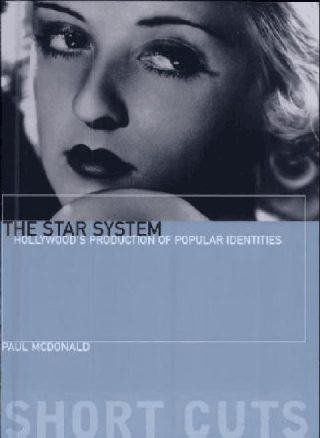
“Wha? What’s this?”
Please, I swear it is useful. It is a book, which is called The Star System by Paul McDonald which I recommend among other things and talks about this phenomenon in the Hollywood industry, very interesting…
“Would you stop?”.
Okay okay, now we’re getting there.
First I should explain to you what the heck is this “star system” and what is meant by the concept of stardom that I will explain shortly. It has to do with the actors, the stars to put it better, and the public.
Try to understand me, this is the era of character drama, isn’t it? What better way to introduce the topic with Ib, since we are talking about it now … Well, in some ways we have started to see this phenomenon in a minimal part, or the bond that is created between spectators and characters, also with Corpse- Party.
In this particular particular time band the phenomenon with HOR-RPG has exploded among fans, perhaps for more multifaceted characterizations (take for example Mary, who has a facade and depending on the contexts shows a different side of her personality), or you want for the creation of real imaginary interactions by fans between the characters of the titles, in this way making them “come out of the frame”, that is, get out of the frame of their narrative contexts to start surviving as “stars” of the current HOR -RPG.
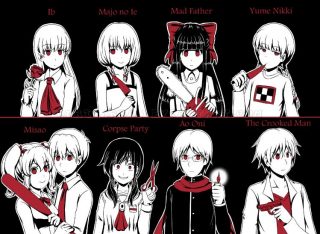
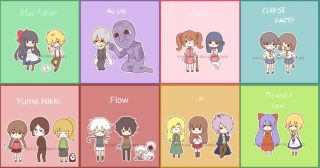

(If you look up “RPG Horror” on Google Images these types of results appear.)
So … Maybe already with this brief introduction you could have understood roughly what kind of topic we are dealing with when we talk about Star System.
In reality there are two terms (Star System and stardom) that reveal a fairly complex industrial apparatus.
It is based on a system that was born with Hollywood but which has not been abandoned today.
Let’s take a few steps back.
So talking about the dawn of Hollywood means first of all taking us to the 1920s, when a new type of industry was taking shape.
The film industry has always been full of risks, in which methods had to be found to be able to compensate for the expenses.
Over time, to sum it up in a nutshell because we are here to talk about HOR-RPG and not, obviously, about the history of cinema, new ways have been tried to create guarantees of earnings, and those guarantees were the stars.
A star stands out from a common actor: it does not lend itself only to staging to perform an action and make an imaginary story true, no, a star brings a face, an attitude, a gesture, a look that the spectators will love.
A look that will continue to be sold, creating a monetary circle influencing the rights to the image even beyond the film itself: interviews, newspaper covers, later with modern marketing methods also gadgets.
Stardom is the myth. In other words, it is an actor’s “portfolio”, of the roles he has played and which contribute to defining their icon in a specific way.
… And maybe you are thinking that all the more reason that here we are talking about real actors, of an industry, which is the cinema industry, which has nothing to do with the context we are analyzing here on the Archives. Agree. You are right because as I said, here we are talking about market systems and methods applied to real people, so obviously it cannot be exactly the same with respect to fantasy characters.
But … There is though. We can find a similar mechanism also in fictional characters, if we want.
Then. I suppose many of the boys and girls who read these articles are passionate, or at least know about anime. What do you say? You say no? Oh yeah?
Why don’t we think, very trivially, of the types of character design that are given to characters destined for these types of products, or a video game that seems to maintain these types of styles and methods of representation? We seek the exaggeration of representation, the extravagance so that the character can become an icon, and obviously not being able to rely on an actor, they throw everything they can do on the character to make it unforgettable in the eyes of the public, and this even before you can see it on stage for the actions it does, it is something that begins with its appearance.
The search for extravagance in the design of the characters that we have, with the advance of a ruthless industry and multiple offers that this type of market offers nowadays, which fortunately for them responds to a very large demand for consumers has led to certain types of pre-established schemes on the one hand to ensure the consent of the spectators, but on the other hand always has to deal with the vast competition and must find a method to ensure a way to emerge and then a loyalty, and here too one of the first methods that you choose as a guarantee of gain is in the characters and in their eccentricities.
Does an example come to mind for what concerns our field of study? Like… This?!

Okay, so back to HOR-RPG: do you know what the difference is? Obviously so far we have talked about well-established industries, a type of working and perceptive environment that the HOR-RPG is not, but which has managed to achieve these types of results albeit in a (almost) completely natural way.
Obviously it will have happened in other types of “fandom born from independent products” of any kind on the Internet, but the point is this: here we are talking about a game-engine like RPG Maker (or its similar competitors in the case of Wolf-RPG Editor), a simple and affordable tool. Really everyone. All it takes is a computer and a lot of willpower to produce a type of product that will never be like … Who knows … A book, which in any case cannot offer such a direct experience to a reader and which constantly requires an effort of imagination , or a short film (speaking at the level of independent productions), in a universe that is the cinematographic one in which to go on alone and as independent authors is truly, truly complex if you don’t have someone to turn to.
Trying to retrace our steps therefore and the main speech Ib before being a game for us is a phenomenon to be analyzed, a complex phenomenon such as Corpse-Party was.
And yet … Maybe I’m forgetting something.
Maybe I’m forgetting the importance of the Gallery in all this: Ib was not remembered only for its characters.
Ib is a truly special, singular case which, like Akemi-tan – of which we discussed in the previous article – rests on the edge of a razor. Here are two videogame cases therefore with a double nature between trying to tell us something and the priority of making us explore a place.
Unlike its main successors such as The Witch’s House and Mad Father, it has perhaps maintained a more balanced relationship with its environment …
Yet there is to think about something.
From the way the Gallery is shown this shows us first of all compared to a character, Weiss Guertena, to whom the names of his works, the dates, the events told about this figure are linked. “Yeah, a character you never see … “you could tell me disappointed, claiming that the Gallery has its own depth and that this name, Weiss Guertena, is quite insignificant. Well it’s true. You never see it.
…That’s the point! The fact that the character never enters the scene is even more important to make room for his environment. Think about it, if we had seen him as a finished and finished character we would have connected the whole story and the emotions felt to him and not to a defined space.
Think about Ellen, Viola and The Witch’s House for example. We like the house we explore, it fascinates us, but after approaching the end, we cannot help making the two girls the beating heart of the game and of our memories connected to it.
The same could be said for Aya and her father in Mad Father.
And here we come to the main talk about the environments of the HOR-RPG, which before were the real ones responsible for making their games unique.
Here everything is concentrated on the figure of a person: the environment changes its identity according to the subject that lives in it, it is no longer as in Yume Nikki where you explored an environment of which you had no concrete clue about the girl who created it and the nature of his dreams (having to open up to free interpretations), and we are not even in Ao Oni or Akemi – Tan in which we explore homes trying to overcome puzzles while escaping from a foreign, external and completely de- contextualized to what the “normality of that environment” would entail. Not even in Corpse-Party, which has had a complex background construction over time, the Heavenly Host has become what it is because of the souls that have given it in its current aspect and with which the characters are constantly confronted.
Always starting from the assumption that without a good starting environment, which is highly personalized or realistic, a good product does not come out. And this is true for classic narration, for anti-narrative schemes, for experimental products and so on, as we have already said all the while talking about Generation 0.
However, something is changing here.
To begin with, it is extravagant and you never know what to expect from the various areas, justifying this choice because it is linked to the “figure of an artist”, and then there are many characters who interact with the player.
This happens until Mary completely takes the space on stage by transporting us to her Album of drawings (speaking of this, not by chance it is an environment that is remembered for Mary precisely, during this final act “the Gallery leaves the scene”) .
In short, the real trump card lies in kouri’s ability, in this very subtle and delicate operation, to have made the space of the staging move hand in hand with the main characters giving it full justice.
Without forgetting the atmosphere of course (with a quote to the suspense created by the doll scene that we have already discussed in the Midnight Train review: “See the famous scene of the giant blue doll in the doll room, there is a construction of remarkable suspense: the key is not found and you have to tear up rag dolls while one of them emerges from the light, accompanied by death bells that only waits for the player to fail. It was a random system by the way: where you had found the key it once wasn’t said you found it the second time.”)
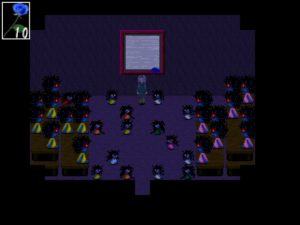
The classification of the areas by colors, the puzzles built in order to offer space and personality to the creatures we meet, the information on the works of art and the recurring enemies such as rag dolls or mannequins and the various Lady are all clues that should make us understand that the Gallery is a character, and this would represent for me the only reason why it is held in high regard today.
Welcome, gentlemen, to the era of character drama.
Professionality Meter
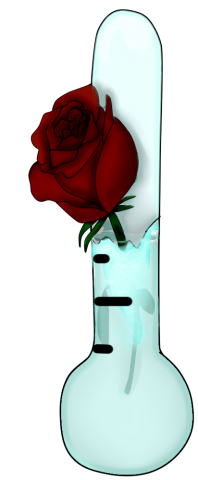 Yes, you have seen clearly: once again we have a thermometer of professionalism low or at least … Which reaches almost half.
Yes, you have seen clearly: once again we have a thermometer of professionalism low or at least … Which reaches almost half.
“These two are annoying…” you are thinking “they don’t like anything.” Those who know us should already know how we think, while for those who instead this on Ib is the first article that reads and interfaces with the heading Back to the Future we invite reading the introduction to understand what are the criteria with which we move in the analysis of the titles of this section…
Even here, we try to be honest and confront our nostalgic feelings: as much as Ib was a subject with a truly remarkable potential if put in the hands of expert producers, this title remained only an authorial draft of a great ” rough project “.
I am saying this because of the defects that we will discuss better in the appropriate section, and perhaps, if you have had the opportunity to read our other articles in the column or the normal reviews, you should know how the relationship with writing is fundamental for the success of a product that works commercially. How?
… Adopting a linguistic code that is as universally recognizable as possible by viewers, with a clear and well-defined main plot.
And of course in the case of a video game we should never forget how this is tied with the gameplay, but this is not a defect that concerns this game.
Let’s go back to the analysis.
Packaging
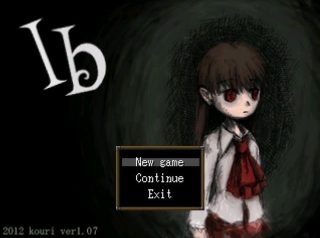
So, before analyzing any stylistic operation: noticed something?
Let’s see if you understand where I want to go considering all the speech we have dealt with before …
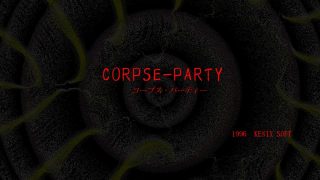
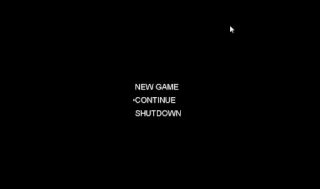
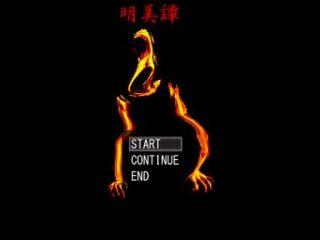
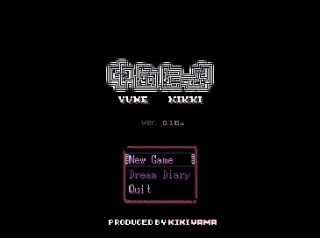
…Yup. Exactly. This is the first to have a character on the screen.
Although it is “sketched” and whose design style is perfectly embodied and confused with the rest of the background (we do not see clean colors or well-defined traits, as in the production of an anime for example) for the first time the HOR-RPG carries a face: not an indefinite background, not a black background, not geometric shapes and not even a monster, but a human face. As will happen from now on for a whole series of HOR-RPG titles present, starting from Mad Father and so on with all the facets…

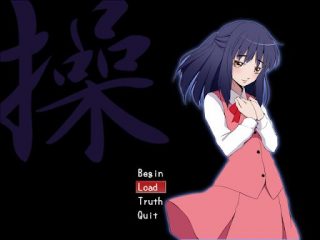
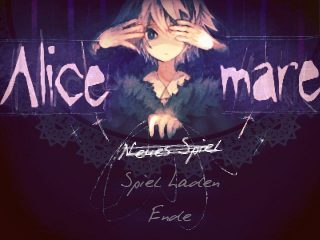

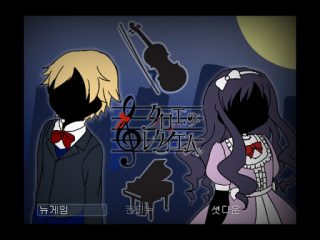

A face that, however, as I mentioned before, blends into the background: it is not put on display in any way within the image, unlike the covers above other titles. The colors are dull, not bright, transmitting a sense of static and quiet.
The style of this game has undoubtedly been appreciated by many users, due to its sophisticated nature and which seems to bring an environment like an art gallery very well on the screen, which already is a new and unusual concept for a horror title , who apparently only needed good skill in managing the gameplay and staging to bring it out.
What makes the title special is the personality shown even in the drawing style.
When you see the icons of the characters apparently it would seem a “sketchy” style of drawing, we had already had an example with the characters of Akemi-Tan (to whom, not being able to place it chronologically, it would also be remembered that he may have been the first to insert protraits drawn “by hand” by the same author with the intention of creating original subjects), yet as sketchy as the lines may seem, they work well in the visual balance with the maps that are explored.
We talked about the role of the music in the Trump Card paragraph, in which we referred to the main themes that certainly contributed to better define the nature of the characters (melancholic melody on the guitar; music box chosen as a stamp for the “lightness / innocence” of the girls and the two different melodies, one slower and the other more lively) and therefore the nature of the game. The ambience OSTs that did their job are not to be forgotten, even if they were mainly selected by free BGM sites.
Author-work relationship
Here could explain why Ib is a video game that survived the market thanks to external agents, instead of approaches directed by the same author (as instead preferred by his colleagues, Fummy –The Witch’s House– and Sen –Mad Father–, who preferred to work on remakes or light novels or other projects to work on commercial exploitation).
Well, on the page of the kouri site, the author of Ib for those who do not know his name, a special notice is written regarding the reception of emails.

In short they are indications regarding authorizations and permits. This confirms what we introduced at the beginning of the paragraph for the note, namely that the game in the “market” survived alone, thanks to its particular personality.
It has probably already happened to him / her to refuse contracts from producers, perhaps he did not want to stain the nature of the work. Perhaps the background of the Gallery would have been better explained as it happened for Corpse-Party (see the defects paragraph) but at the same time perhaps the characters would have been denaturalized (see the article on Corpse-Party).
In this fairly dated interview, the one we mentioned in the history of the product, we can see how the author has seen their work over time …
― NOTICE: THE INTERVIEW IS IN JAPANESE, IT HAS BEEN TRANSLATED WITH THE TRANSLATOR IN ENGLISH: THE CONCEPTS, HOWEVER, SEEM TO BE UNDERSTANDABLE ―
―What inspired you to make Ib?
kouri Since I had some time in my private life, I decided to try to create a game that I always had the intention of creating. The setting is an art gallery, because it was easier to try to create puzzles and mechanisms.
―How did the production go?
kouri First of all I asked myself this question: “What kind of game do I want to play?” I made that part clear, wrote a basic story, decided the main character and the whole setting and worked on it constantly. The “horror element” and the “mysterious element” were very important in “Ib”, so I thought about these two elements a lot. For the horror part, I simply put “elements that people are afraid of” into the game in a well balanced way, and for the part where the “mystery is solved”, I used the map structure to intertwine the use of works of art in the puzzles and make them interesting. In addition, I made sure that even those who are not good at video games can finish it as serenely as possible.
―What do you think are Ib’s strong points?
kouri I would be really happy that if the players felt the eerie atmosphere of the museum, and I also worked a lot on the sprites.
―How was the reaction of the users who played Ib?
kouri I am really happy to have received a generally positive reception in many parts of the world especially from the point of view of the characters: this convinced me to work every day on the subsequent versions of the game
―Finally, say one last sentence to the community.
kouri Thanks for playing Ib! Even if you haven’t done it yet, Ib is free so if you have time, please try it. It’s not very difficult, you can play it safely. I’d be happy to know if you liked it when you finished it.
So here too we are faced with a phenomenon that has characterized Generation 0 for a long time: the carefree approach with HOR-RPG video games. Both from the public and from the players themselves, the times in which they tried new games and looked at productions with an experimental approach, environments that although niche managed in exceptional cases to reach the attention even of non-players.
This is the key to why the thermometer line with professionalism is so low for a game like this.
An innovative game of its kind but which is still anchored to the exploratory and experiential approaches for which its predecessors have distinguished themselves.
What is interesting to note in this interview is how one thing was stated: kouri already knew where he wanted to go. He first chose the context (i.e. the predominant environment) and then the genre. Choosing a genre in advance, or horror in this context, already means choosing a certain type of linguistic code. Probably the question that arose was: how can I make a museum unsettling?
Knowing where you want to go right from the start is one of the tips that professionals in the creative and audiovisual sector give and is often the key to working with quality products. Despite this, it can also be seen how he / she declared that he / she thought about the plot afterwards, and this can be seen in the final result …
… Which we will talk about shortly.
Defects
Finally, here we are. This is a sore point every time … Yeah …
So yes. The defects of Ib.
Let’s also say that as far as the positive aspects are concerned, we have only reached the same conclusions that many of us have arrived before, namely that the exploratory experience offered by the museum and the way of representing it have laid important foundations for the immense success of the title: that’s the trunk, the backbone of the game, let’s not forget that the two characters, Garry and Mary appear very late and you can interact and get more excited atmospheres only later. Above all the latter, which could be said to be useful only to close the narrative circle during the final acts.
So the point is to understand instead what is it that didn’t work.
Well, we could say that from the simple respect of the internal rules of this world, the world of the Gallery, there is something wrong.
I could start by talking about the rule of damaging paintings: many complaints for a lit lighter…
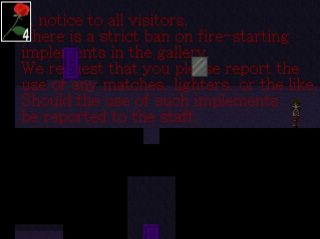
… And then when Mary’s picture was burned there didn’t seem to be any kind of repercussion.
Not to mention the myriad of information we don’t have about this place, namely: who wrote the two-person rule? Why? How does the relationship between the two worlds work? Why is the Gallery now “unattended”? How did Mary gain this sort of leadership among other art pieces? Why, about the latter, some attack the protagonists and others do not?
… And don’t try to find justification by some random theory because it is information that is not given to us in any way during the game. Yes, interacting with every possible object.
Maybe I’m exaggerating, maybe for some of these questions the answers are there because it was enough to read the descriptions of the works well, however most of the background of this “Fabricated World” remains in mystery and is ignored. It is so “because it is like this”, we have to imagine the rules.
Now you understand well how to make a certain background incomplete after certain types of information have been reported is complicated when you decide to try to bring a product to a more demanding level of narration.
I will repeat a phrase that I have already said in this article: in some ways it is not “different” from Akemi-Tan, both are on the edge. If the game had left a little more information, it probably would have betrayed itself and would have had to face a series of contradictions that would have broken the very thin balance on which the main plot was built (Ib and Garry want to leave the Gallery, Mary doesn’t want to – exposure of the conflict, final acts) and on which the award-winning atmospheres of the game were based.
A question may now arise spontaneously is …
Why Akemi-Tan, which has the same type of writing defect (especially the lack of a solid background) but which still maintains a state of very high tension, has not been taken into consideration as was Ib?
The answer has been brought up quite often in this article.
As I said before: there we were simply exploring haunted houses, probably the players and spectators did not care about investigating Akemi’s past: solved the problem of the curse, solved everything, we are satisfied with it. The lack of background on Akemi seems to have weighed little on the players: there was only an imbalance between one part of the game and the other with total change of atmosphere.
In Ib … There aren’t only the characters. In Ib there is the Gallery which becomes the main actor of the game and proposes certain rules.
Having said that, how do we put it? We take this game as it is?
Conclusions
…Drumroll…
Our answer can only be positive. This character drama is a very complicated branch of HOR-RPG history to observe, in which it takes just a few months to notice the abysmal changes in the relationship between exploration / gameplay and story-telling.
We have just entered the Golden Age, an age in which new rules begin to be defined and written for the creation of a Horror RPG that even the authors of today in some aspects don’t seem to want to give up, a period in which the HOR-RPG doesn’t know how what it is. It is not only an independent product, but it certainly is not even a commercial product produced by professionals.
They are not experimental titles, everyone wants to conquer their own identity, yet the various fans cannot associate the faces and names of those who produced these works, who prefer to remain as “hidden individuals”.
The characters begin to be seen as “stars”, as happens in the audiovisual and videogame products launched by the production companies, but on the other side it is very difficult to imagine their complete backgrounds, this until you will always define a type of writing more articulated.
So with our time machine we have just entered an era of vivid transformation! You will realize this for yourself: each title will be very different from the other by adding new features and rules for the definition of the HOR-RPG current that we are studying, this starting from the arrangement of narrative information proposed by The Witch’s House, that we will meet next time…

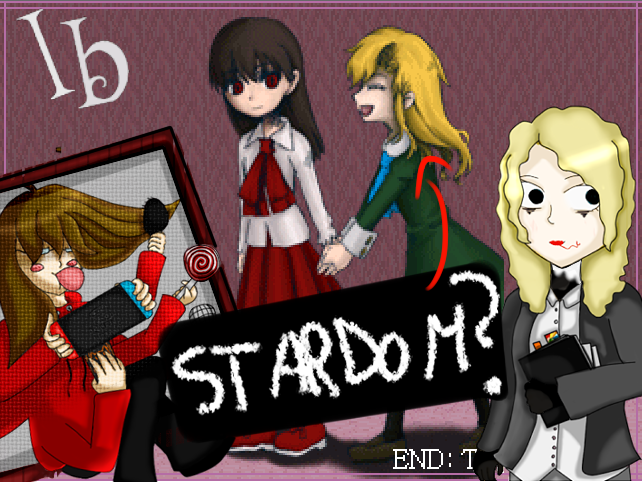
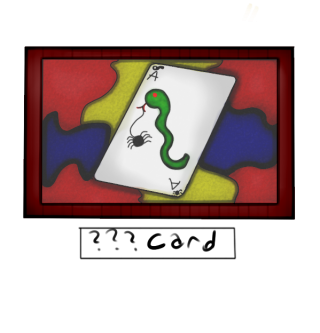

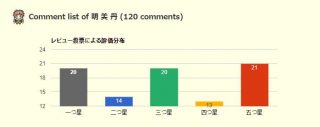

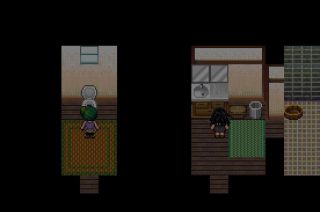

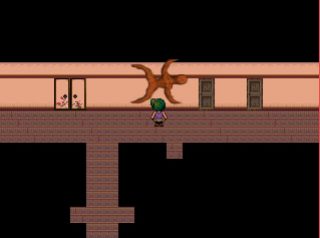
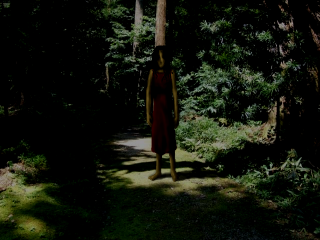
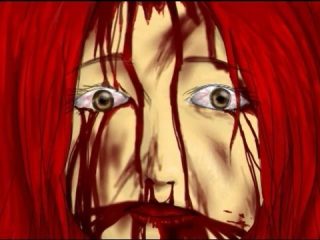
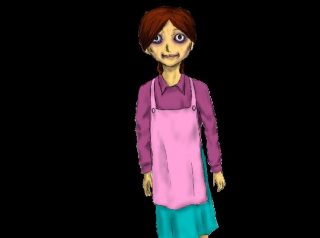

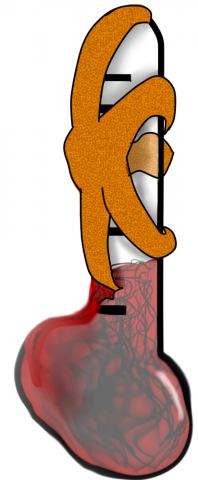 Perhaps having the thermometer at this level will seem quite obvious to you. Let’s take a closer look at everything …
Perhaps having the thermometer at this level will seem quite obvious to you. Let’s take a closer look at everything …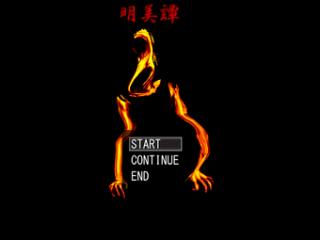



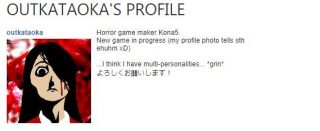

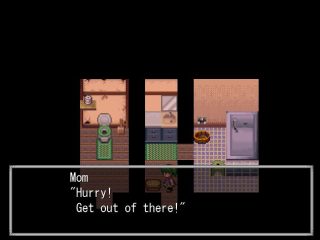
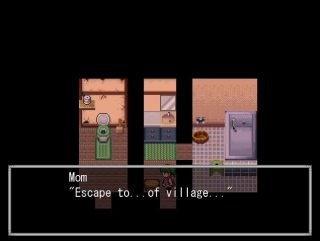
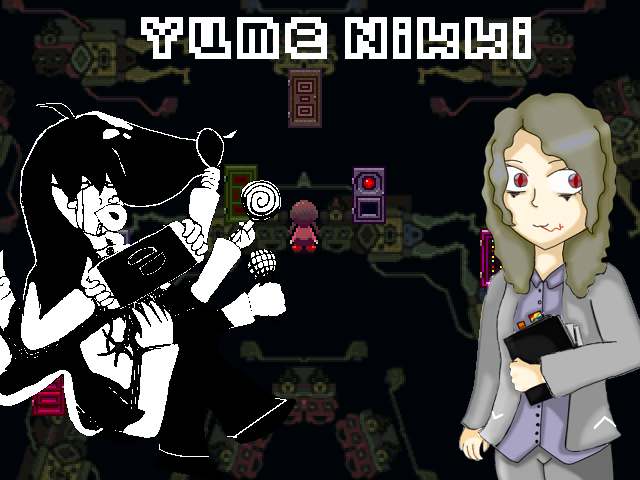
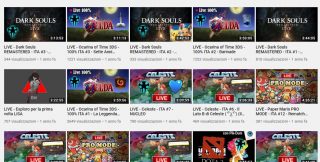
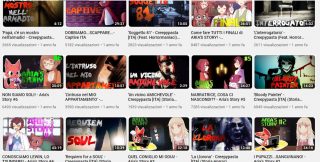
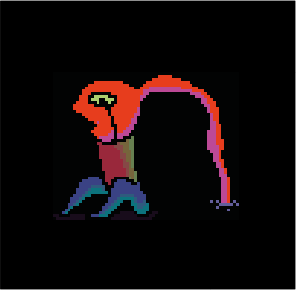

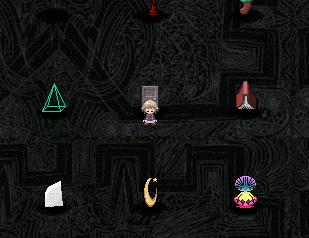
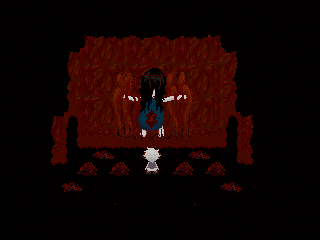

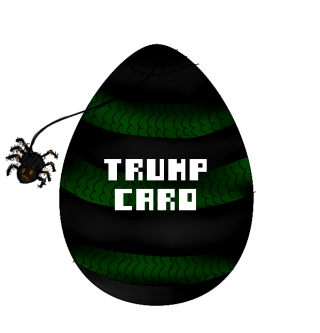
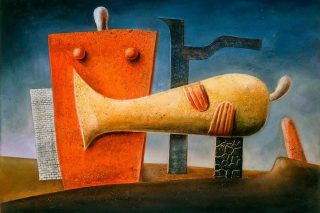
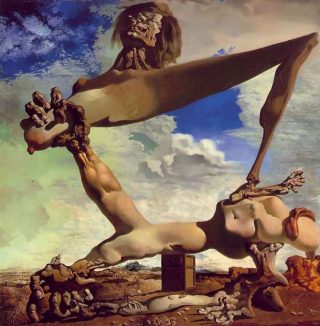
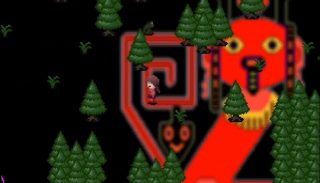
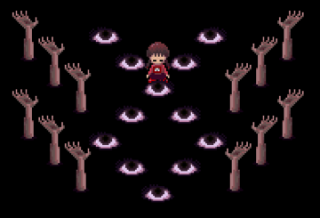
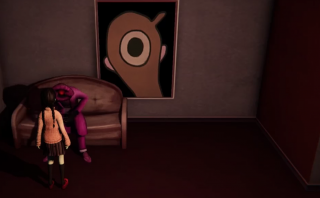
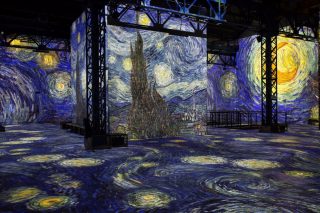

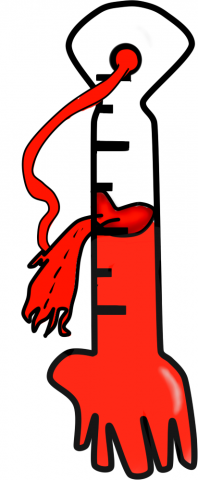 And being left hanging with a reference to the aura speech on mechanical reproduction and the “depersonalization of art” we reflect for a moment again on the intent of “
And being left hanging with a reference to the aura speech on mechanical reproduction and the “depersonalization of art” we reflect for a moment again on the intent of “ In its simplicity reveals an unparalleled elegance: the labyrinth as a logo and title of the game prevail over pink little frame that contains the start of the game functions, continuous and output.
In its simplicity reveals an unparalleled elegance: the labyrinth as a logo and title of the game prevail over pink little frame that contains the start of the game functions, continuous and output.

